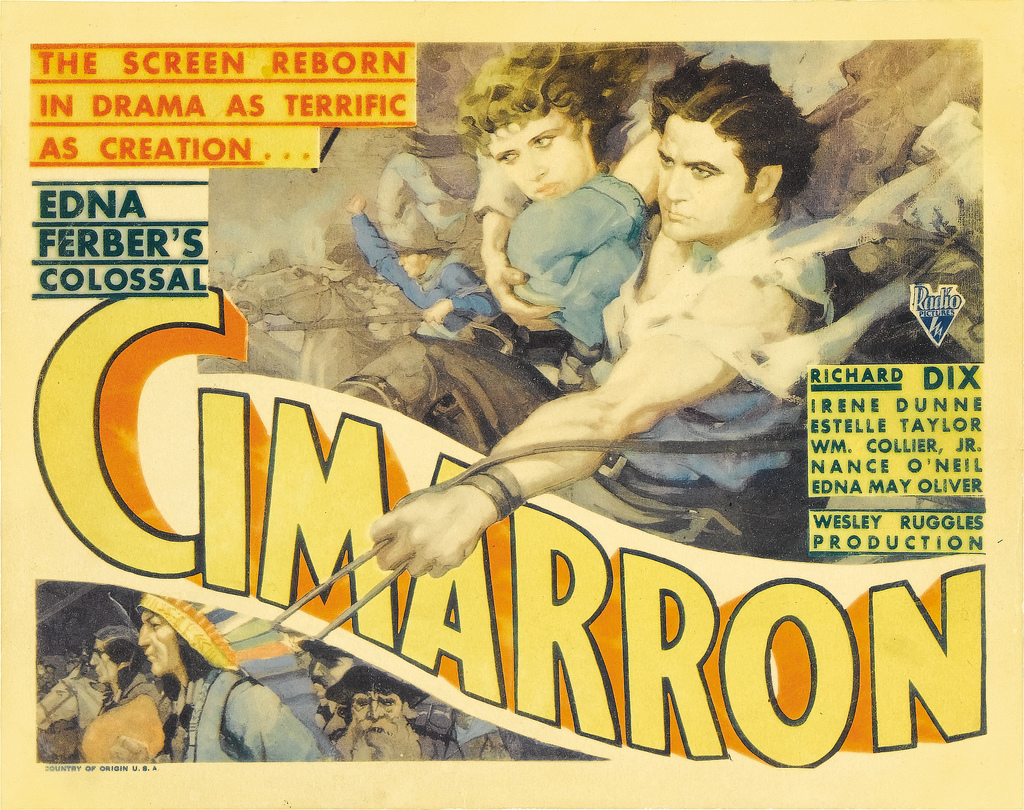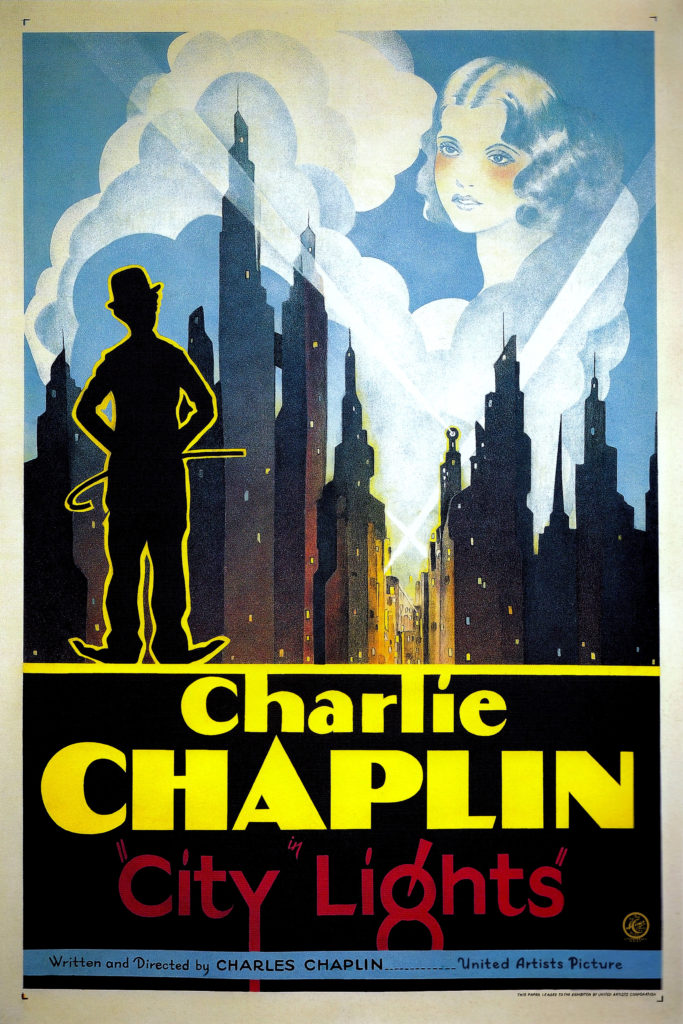1931
Okay. So. Five films in, two with blackface, one horrifyingly racist, hopefully this next one isn’t filled with hurtful stereotypes or anything, just something fun and exciting like Wings or–
And The Oscar Goes To…

A western, you say. In the early 30s, you say. This… could be another racist one. Let’s find out.
…Called that one wrong. But Cimarron defied my every attempt to guess what exactly it was.
Frontier Gentleman Yancey Cravat, a name I am not making up, played by Richard Dix, a name I am also not making up, joins the 1889 Oklahoma Land Rush, when the US government… acquired… 2 million acres of Cherokee land, and said “First come, first served” to white settlers. Yancey loses his preferred claim to Fallen Woman Dixie Lee, but still chooses to move his wife and son out to Oklahoma, to be part of building this new frontier and future state, by starting a newspaper to cover the local happenings and stand up for the Cherokee people.
Gonna be honest, I did not see “Yancey Cravat: Frontier Journalist” coming when I sat down to watch this.
While Yancey Cravat is adored by most of the new town of Osage, his wife (who hates natives) is less thrilled with their new home, and he runs afoul of a gang of street toughs, the leader of which Yancey suspects of having killed the previous newspaperman. So that’s our movie, right? Yancey Cravat goes a few rounds with a local gang leader, his wife falls ill or leaves him, leaving him free to hook up with Dixie Lee?
No. None of that. Stop trying to get a step ahead of Cimarron, it’s impossible.
Yancey gets asked to lead the town’s first church service, has a gun fight with the Bad Guy mid-sermon, and that’s the end of that, but the movie isn’t even halfway done. Vigilante Preacher Yancey Cravat defends the town from bandits (one of which was his friend, as everyone is); preaches against bigotry; returns from five years away from home (I assume based on his military garb, single-handedly defeating the Spanish armies) and within minutes is defending Dixie Lee in her trial for… generic wantonness, or something… by attacking patriarchal victim blaming; blows his chances to be Oklahoma’s first governor by defending the Cherokee from attempts to steal their newfound oil money and calling for full indigenous citizenship; and inspires his wife to be less racist and run for Congress. Every fifteen minutes there’s some new wrong for Justice Crusader Yancey Cravat to put right, usually accompanied by a time jump, as the movie goes from 1889 to 1930, the year before its release. The mind-boggling jumps in story and over-the-top depiction of Perfect Human Yancey Cravat’s righteousness, which for 1931 was pretty damn progressive (was anyone else admitting America was built on stolen land in 1930s mass media, let alone celebrating mixed-race marriages?), make it hard not to at least partially get swept up in this weird, ridiculous story.
That said, while Yancey does feel taking land from the Cherokee is wrong, he does participate in two land grabs, and while it’s not mentioned, the Tulsa Race Massacre definitely happens. And their one black character is… not dignified. So let’s not pretend Oklahoma is some cradle of tolerant society or pat yourself on the back too hard, Cimarron.
Regardless, I have no choice but to devote this post to that pinnacle of nobility, Frontier Journalist and Vigilante Preacher Yancey Cravat, Attorney At Law, Friend To The Little Guy, Defender of the Defenseless. Every protagonist shall be compared to Yancey Cravat, and almost certainly found wanting.
Here’s my live-tweeted reactions for the curious.
And Rotten Tomatoes Says: With an adjusted score of 53%, Cimarron comes in at 91/93. Look, obviously recency bias is gonna come into play down the line with good ol’ RT, but damn, the golden age isn’t doing great in the rankings. Maybe, like I often do, these reviewers also demanded some sort of rational plot, but I gotta say I take umbrage with this low ranking. Give me Yancey Cravat over Johnny Greenbook or Count Edmund von English Patient any day.
Now for the box office champ, which if I’m honest has been a real string of let-downs so far, what did the crowds choose over Inspirational Icon Yancey Cravat…
The Box Office Champ
Oh thank the maker it’s Charlie Chaplin. Thanks for this, 1931. Chaplin’s final all-silent film finds the Tramp befriending a depressed, drunken millionaire (who only remembers his new pal while drunk) and falling in love with a blind flower girl, and there’s still good laughs and a few heartstring tugs here.
And Rotten Tomatoes Says: 98%, stone-cold classic.
What Would Yancey Cravat Do: Well he’d have had a word with the snooty butler who kept trying to throw the Tramp out. Maybe help the rich guy remember his friends while sober.
Other Events in Film
Nothing of note, let’s proceed.
Next Page: Hotel of the Stars and That Jerk is Back


One thought on “Art Vs Commerce: Beginnings (20s/30s)”